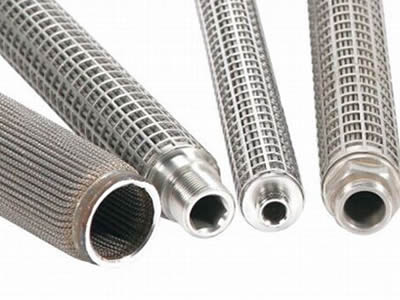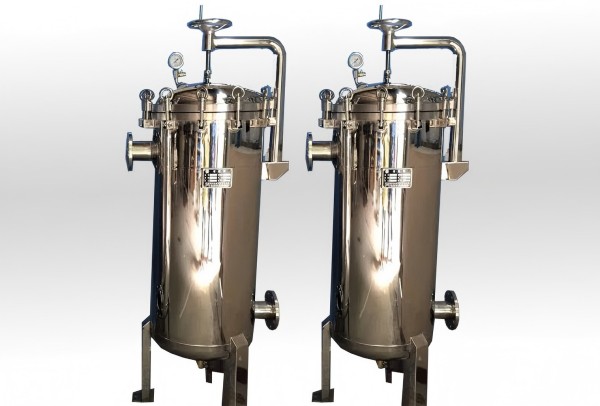Candle filters are frequently employed in a variety of industrial settings to separate liquids from solids. They are particularly useful in situations where high-efficiency filtration is required, such as in the chemical, pharmaceutical, and food industries. Candle filters operate by passing liquid through porous filter elements, typically in the shape of cylindrical “candles,” to remove contaminants effectively.
In this comprehensive guide, we will explore the different types of candle filters, how they work, their advantages, and key considerations when selecting the right candle filter for your needs.
Table of Contents
ToggleWhat is a Candle Filter?
A candle filter is a filtration tool that effectively and precisely separates solid particles from liquids. The filter consists of several filter elements, often cylindrical and shaped like candles, which are housed in a vessel. The porous surfaces of these candle-shaped filter components let liquids flow through while capturing solid particles.
The liquid is forced to flow through the filter candles under pressure or vacuum, depending on the system setup. The solid particles are trapped either inside the porous structure of the candle elements or on their surface. Depending on the system design and the type of particles being filtered, the filter components may need to be cleaned or changed over time.
Key Types of Candle Filters
There are several types of candle filters used in different industrial applications, each with its unique design, filtration mechanism, and operational features. Below, we outline the most common candle filter types.
Pleated Candle Filters
Higher flow rates and improved filtration efficiency are made possible by the pleated filter media used in the design of pleated candle filters. These filters are appropriate for hostile settings since they are usually constructed of materials that resist corrosion, such as stainless steel.
How They Work: The pleated design increases the total surface area of the filter element, enhancing its capacity to filter large volumes of liquid. As the liquid passes through the pleated surface, solid particles are captured on the surface or in the pleats, leaving the filtered liquid to pass through.
Advantages:
- High filtration capacity due to increased surface area
- More efficient filtration for large volumes of liquids
- Sturdy and corrosion-resistant
- Simple to keep and clean
Applications:
- Chemical and pharmaceutical industries
- Food and beverage processing
- Water treatment plants
Strainer Candle Filters
Strainer candle filters use a straining mechanism to trap large particles from liquids. They are designed with a larger pore size than pleated filters and are primarily used for coarse filtration. The filter elements are made from perforated metal or mesh materials.
How They Work: Strainer candle filters rely on a relatively coarse mesh or perforated filter material to trap solid particles larger than the pores of the mesh. The particles are caught on the filter element’s surface as the liquid passes through the mesh.
Advantages:
- Ideal for coarse filtration applications
- Low maintenance and cost-effective
- Able to deal with higher flow rates and bigger particle sizes
Applications:
- Pre-filtration stages in chemical processing
- Oil and gas industries
- Water treatment and cooling systems
Cartridge Candle Filters
Cartridge candle filters are designed for fine filtration. They utilize a cartridge-style filter element, typically made of pleated or non-pleated filter media, which can effectively remove fine solid particles from liquids.
How They Work: In cartridge candle filters, the liquid passes through a cylindrical filter cartridge. The cartridge has a fine pore size that traps smaller particles, allowing only the purified liquid to pass through. The filter cartridges are replaceable, which makes maintenance more efficient.
Advantages:
- High effectiveness of filtering for fine particles
- Changeable filter cartridges make maintenance simple.
- Compact design, saving space in filtration systems
Applications:
- Biotechnology and pharmaceutical sectors
- Producing food and drinks
- Liquid filtration in laboratories
Pre-Coat Candle Filters
Pre-coat candle filters are designed for highly efficient filtration by using a thin layer of filter aid (like diatomaceous earth or perlite) on the surface of the filter elements. This pre-coat improves the filtration performance, allowing even finer particles to be captured.
How They Work: Pre-coat candle filters work by first applying a layer of filter aid to the filter elements. As the liquid flows through the filter, the filter aid captures the solid particles, allowing for a finer level of filtration. By creating a porous layer, the filter aid increases filtration effectiveness and prolongs the life of the filter media.
Advantages:
- High filtration efficiency for both coarse and fine particles
- Extended filter life due to the pre-coat layer
- Suitable for difficult-to-filter liquids
Applications:
- Fine chemical processing
- Oil refining
- Food and beverage filtration (e.g., beer or wine clarification)
Vacuum Candle Filters
Vacuum candle filters use vacuum pressure to draw the liquid through the filter elements, leaving solid particles behind. This filtration method is commonly used when dealing with slurries or thick liquids with high solid content.
How They Work: In a vacuum candle filter, a vacuum is created inside the filter vessel. As the liquid is drawn through the candle filters, the solid particles are left behind on the surface of the filter elements. To achieve high-efficiency separation, this method is frequently combined with other filtration processes.
Advantages:
- Effective for slurries and liquids with high solid content
- Can handle both fine and coarse particles
- Efficient filtration under low-pressure conditions
Applications:
- Mining and mineral processing
- Paper and pulp industry
- Wastewater treatment
Pressure Candle Filters
Pressure candle filters use positive pressure to push the liquid through the filter elements. This method is often used for filtration applications where high flow rates and high filtration efficiency are required.
How They Work: In pressure candle filters, the liquid is forced through the filter medium while being under pressure. The purified liquid flows through the filter components while the solid particles are trapped on their surface. This method allows for continuous filtration and is highly efficient for a range of industrial applications.
Advantages:
- High flow rates and high filtration efficiency
- Can handle high-pressure applications
- Suitable for large-scale filtration systems
Applications:
- Oil and gas industry
- Petrochemical refining
- Food processing
Candle Filter Types Comparison Chart
| Filter Type | Filtration Mechanism | Suitable For | Advantages | Typical Applications |
| Pleated Candle Filter | High surface area for fine filtration | High-efficiency filtration, large volumes | High capacity, efficient filtration | Chemical, pharmaceutical, water treatment |
| Strainer Candle Filter | Mesh or perforated material | Coarse filtration of large particles | Cost-effective, simple design | Oil & gas, pre-filtration stages |
| Cartridge Candle Filter | Fine filtration with replaceable cartridges | Fine particle removal in liquids | Compact, replaceable elements | Pharmaceutical, food & beverage |
| Pre-Coat Candle Filter | Filter aid layer for fine filtration | High-efficiency filtration for fine particles | Longer filter life, efficient for tough applications | Fine chemicals, oil refining |
| Vacuum Candle Filter | Vacuum draws liquid through the filter | Slurries or liquids with high solid content | Handles high solid content, efficient under low pressure | Mining, paper & pulp, wastewater |
| Pressure Candle Filter | Positive pressure forces liquid through the filter | High flow rate filtration with higher pressures | High flow rates, efficient for continuous filtration | Petrochemical, oil & gas, food processing |
Key Considerations for Selecting Candle Filters
When choosing the best candle filter for your application, keep the following factors in mind:
Filtration Requirements
The type of filtration required will dictate the type of candle filter to use. For coarse filtration, a strainer candle filter or cartridge filter may be sufficient. However, if fine or pre-coat filtration is necessary, more specialized filters like pre-coat or pleated candle filters will be more suitable.
Flow Rate
The flow rate at which you need to filter the liquid plays an important role in determining the right filter. Pleated and pressure candle filters are suitable for high flow rates, while strainer filters may be better suited for lower flow rates.
Particle Size
Consider the size of the particles you need to filter out. Fine particles require filters with smaller pore sizes, such as pleated candle filters or cartridge filters. For larger particles, a strainer filter or vacuum filter might be more appropriate.
Temperature and Chemical Compatibility
Make sure the filter material can withstand the chemicals and temperature of the liquid being filtered. Applications involving harsh chemicals or high temperatures frequently use stainless steel and other corrosion-resistant materials.
Maintenance Requirements
Think about the filter’s maintenance needs. Pleated candle filters and cartridge filters generally require less maintenance, while pre-coat and vacuum candle filters may need more frequent cleaning and replacement of filter aids.
Candle filters are essential tools in industrial filtration systems, offering efficient and reliable solutions for separating solids from liquids in various applications. From pleated filters to vacuum filters, the different types of candle filters each have specific advantages, depending on the filtration needs.
By understanding the different types of candle filters and their respective applications, industries can select the best filtration solution to meet their requirements, ensuring high-quality performance and cost-effective operation.


